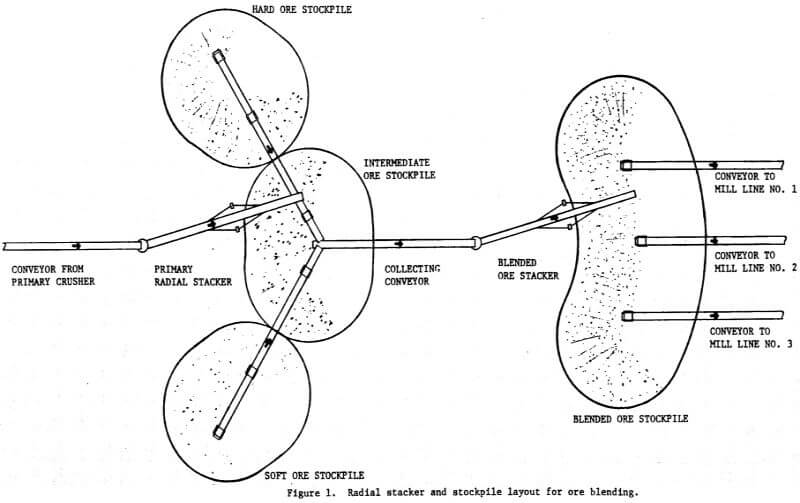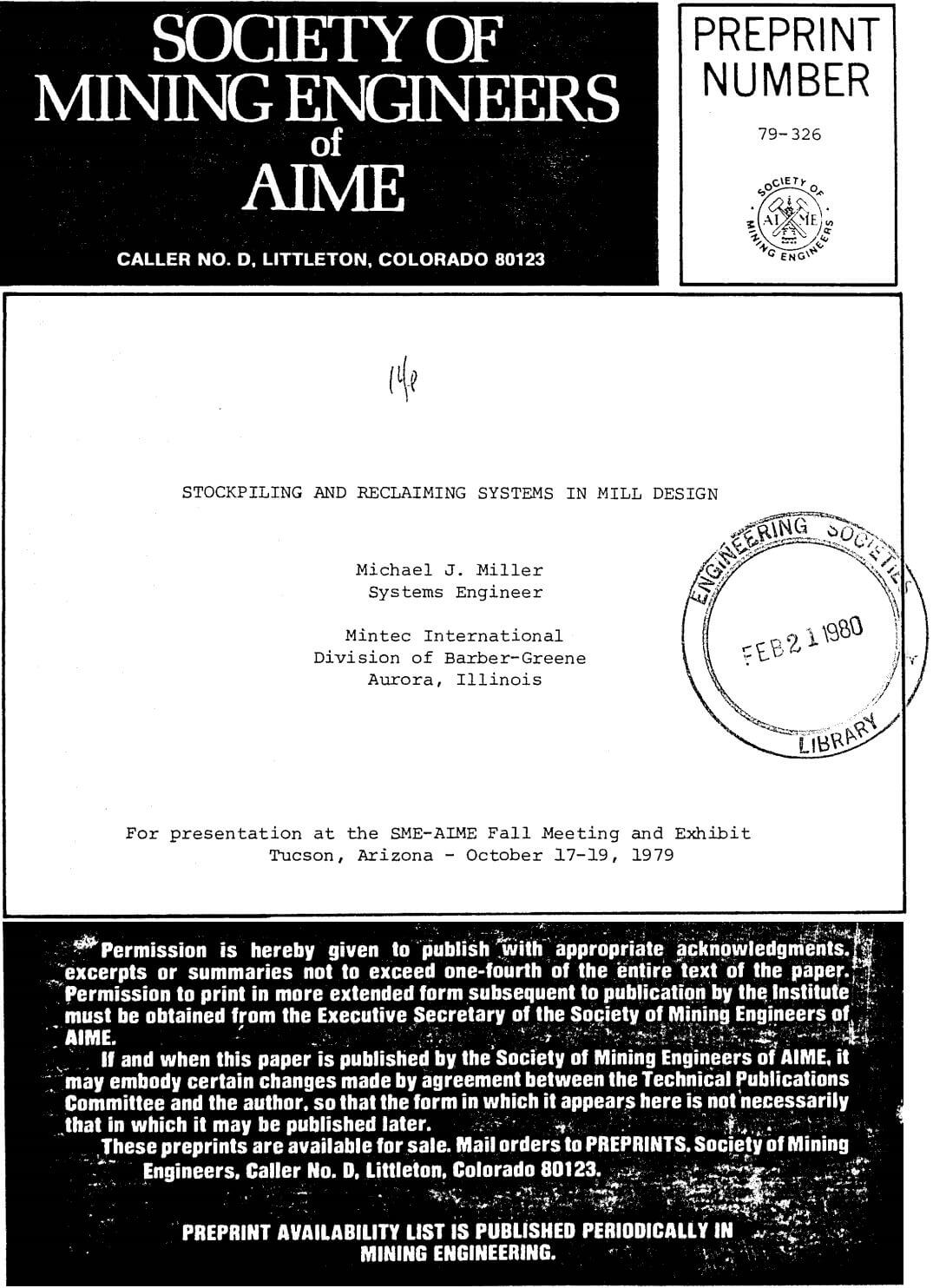Stacker control devices can range from minimal stockpile level sensors to quite complex control systems depending on the desired degree of automation. For the simple fixed stacker, a basic stockpile level sensor to prevent the stockpile from getting too high is often the only stacking control required. This level sensor can be just a simple tilt switch connected to the control circuit of the stacker conveyor motor. When the pile reaches a sufficient height, the contacts on the tilt switch are opened, the stacker control circuit is de-energized and the conveyor motor stops. The conveyor motor normally cannot be restarted until sufficient ore has been reclaimed from the stockpile to clear the tilt switch. This type of arrangement is usually advisable for all types of stackers since it helps prevent accidental damage to the stacker.
With the traveling or radial stackers some sort of control for the stacker movement is required. The simplest control is a push-button actuated by the operator. A more automated system would have the stacker building a conical stockpile up to the point where the pile trips a tilt switch which actuates the traversing drive long enough to move the stacker about 3m (10 ft). The stacker continues to discharge ore at this point until the pile again trips the tilt switch and the cycle repeats. At the end of its travel, the stacker trips a limit switch which reverses the traversing drive and the stacker proceeds in the same manner in the opposite direction provided sufficient ore has been reclaimed from the stockpile. A variation of this scheme is to have the stacker traverse slowly back and forth from one limit of its travel to the other, continuously building the stockpile as it goes, until the pile builds up to the point where it trips the tilt switch and stops both the movement of the stacker and the stacker conveyor.
For radial stackers, traveling stackers, shuttles or trippers which must build separate stockpiles of different ores, a sophisticated programmable controller can automatically position the discharge of the conveyor by following almost any pattern. Combined with stockpiling and reclaiming belt scales, these programmable controllers can even automatically indicate the stockpiled quantities of the different types of ore. The programmable controller provides the greatest flexibility and sophistication for complex stockpiling systems; however, control relays, due to their lower unit cost and basic simplicity, would still be the primary choice for simple stacker control systems. An expert evaluation of the stacker control system requirements is usually the best way to determine which of the devices to use.
As with all conveyors, such items as emergency pull cord switches, zero speed switches, belt run off switches and plugged chute switches can be provided and incorporated as part of the control system.

